A U-tube of length L contains liquid. It is mounted on a horizontal turn table rotating with an angular speed ω about one of its arms as shown in Fig Find the difference in heights (h) between the liquid columns in two vertical arms.
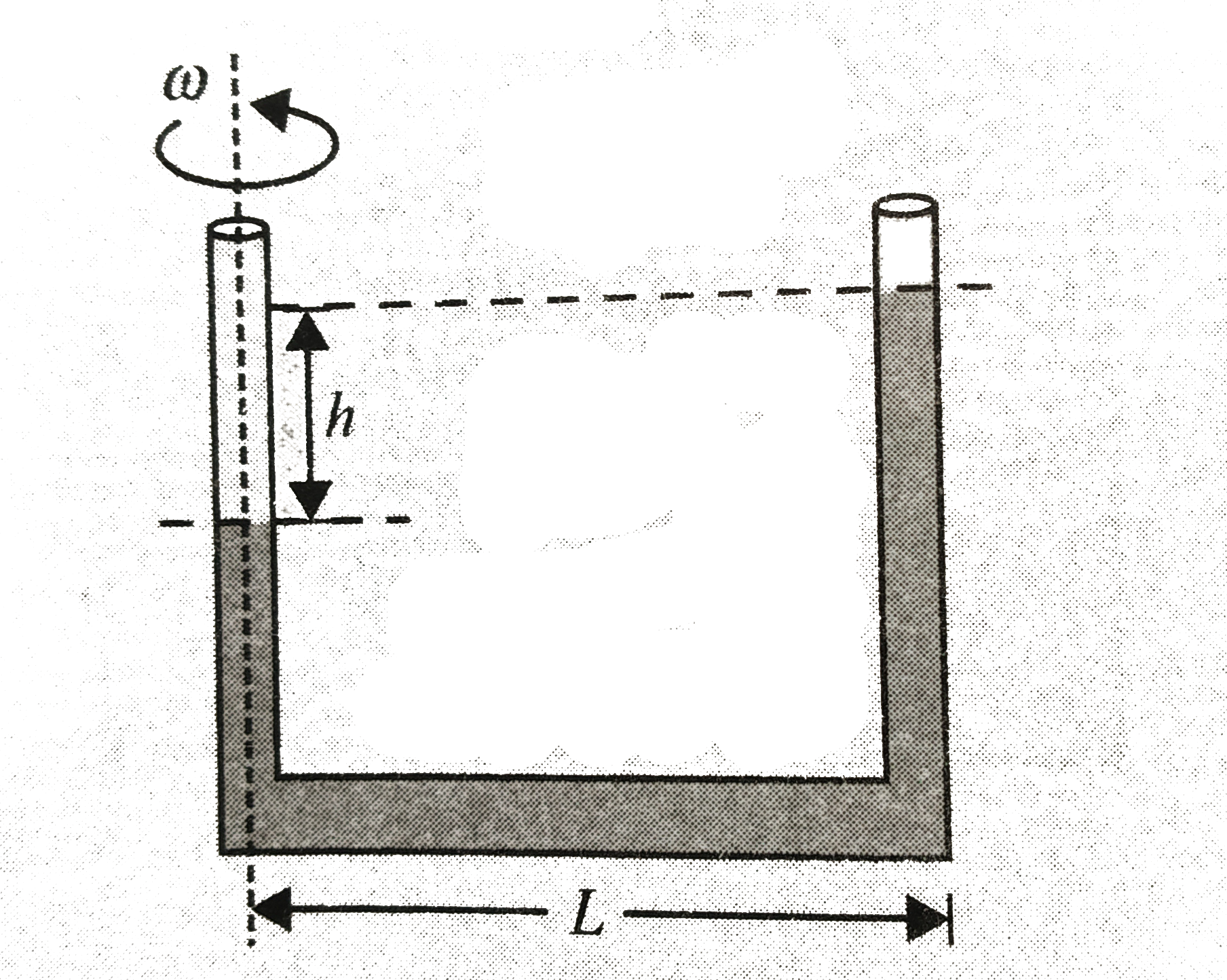
ω2L22√2g
ω2L22g
2ω2L2g
2√2ω2L2g
The correct Answer is:B
dF=dmxω2
and (dp)=ρω2∫L0ωdx
P2−P1=ρω2L22
or ⇒ρgH=ρω2L22
H=ω2L22g
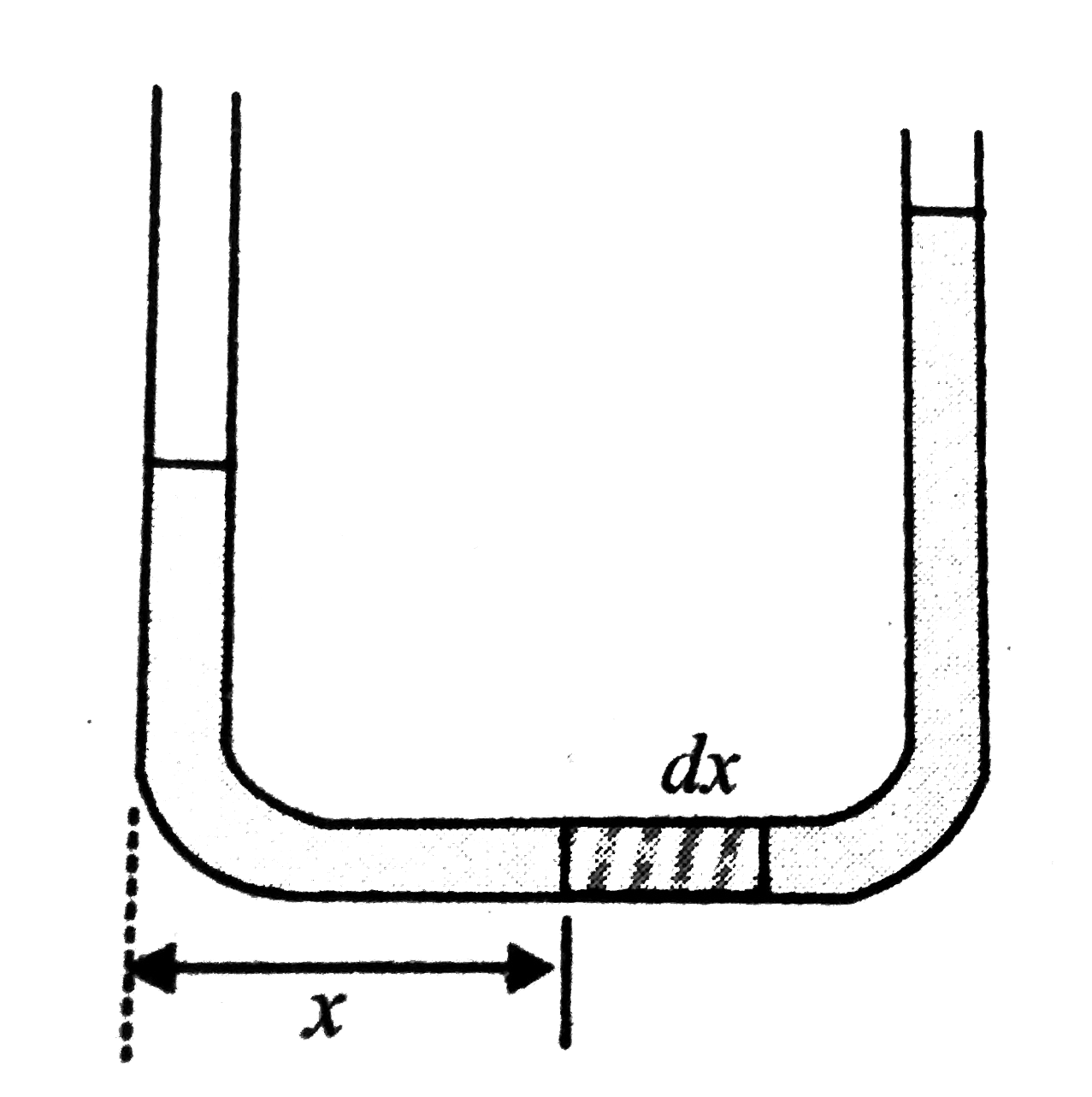
Topper's Solved these Questions
- FLUID MECHANICSBook:CENGAGE PHYSICS ENGLISHChapter:FLUID MECHANICSExercise:Multipe Correct
Explore 15 Videos
- FLUID MECHANICSBook:CENGAGE PHYSICS ENGLISHChapter:FLUID MECHANICSExercise:Assertion-Reasoning
Explore 8 Videos
- FLUID MECHANICSBook:CENGAGE PHYSICS ENGLISHChapter:FLUID MECHANICSExercise:Subjective
Explore 25 Videos
- DIMENSIONS & MEASUREMENTBook:CENGAGE PHYSICS ENGLISHChapter:DIMENSIONS & MEASUREMENTExercise:Integer
Explore 2 Videos
- GRAVITATIONBook:CENGAGE PHYSICS ENGLISHChapter:GRAVITATIONExercise:INTEGER_TYPE
Explore 1 Video
Similar Questions
A liquid flows through a horizontal tube. The velocities of the liquid in the two sections, which have areas of cross section A1 and A2 are v1 and v2 respectively. The difference in the levels of the liquid in the two vertical tubes is h. Then

View SolutionAssertion: Pascal law is the working principle of hydraulic lift.
Reason: Pressure =thrustarea
View SolutionTwo immiscible liquids of densities ρ and 2ρ and thickness (heights) h and 2h, respectively, push a vertical plate. Find the total side thrust given by the liquids on the vertical plate.
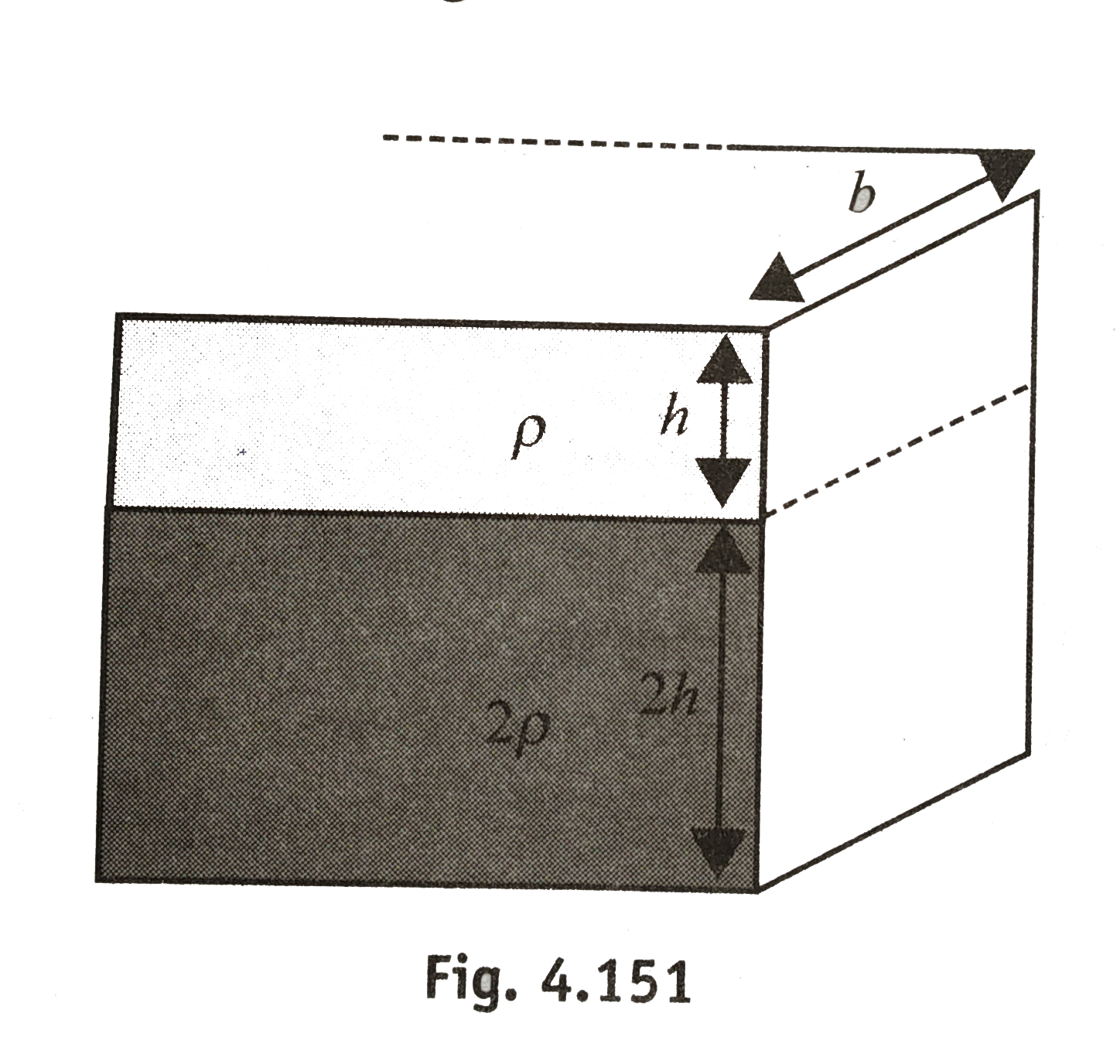
View SolutionTo find the distance d over which a signal can be seen clearly in foggy conditions, a railways-engineer uses dimensions and assumes that the distance depends on the mass density ρ of the fog, intensity (power/area) S of the light from the signal and its frequency f. the engineer finds that d is proportional to S1/n. the value of n is
View SolutionGravitational acceleration on the surface of a planet is √611g. where g is the gravitational acceleration on the surface of the earth. The average mass density of the planet is 23 times that of the earth. If the escape speed on the surface of the earht is taken to be 11kms−1 the escape speed on the surface of the planet in kms−1 will be
View SolutionA U-tube containing a liquid is accelerated horizontally with a constant acceleration a0. If the separation between the vertical limbs is l find the difference in the heights of the liquid in the two arms.
View SolutionA U tube is rotated about one of it's limbs with an angular velocity omega . Find the difference in height H of the liquid (density rho ) level, where diameter of the tube dlt lt L .
View SolutionA vertical U -tube is spinned about the vertical axis passing through the left hand limb, with an angular speed omega such that the liquid columns in the limbs have heights h and 3h , as shown in the figure. Find the value of to omega .
View SolutionA horizontal thin tube of length 2L completely filled with a liquid of density δ rotates about a vertical axis passing through one of its end and along the diameter of its side face with an constant angular velocity ω. Two vertical thin long tubes are fitted with the horizontal tube to measure the pressure difference between points A and B which are at same horizontal level as shown. Neglect viscous forces and surfaces tension of liquid.
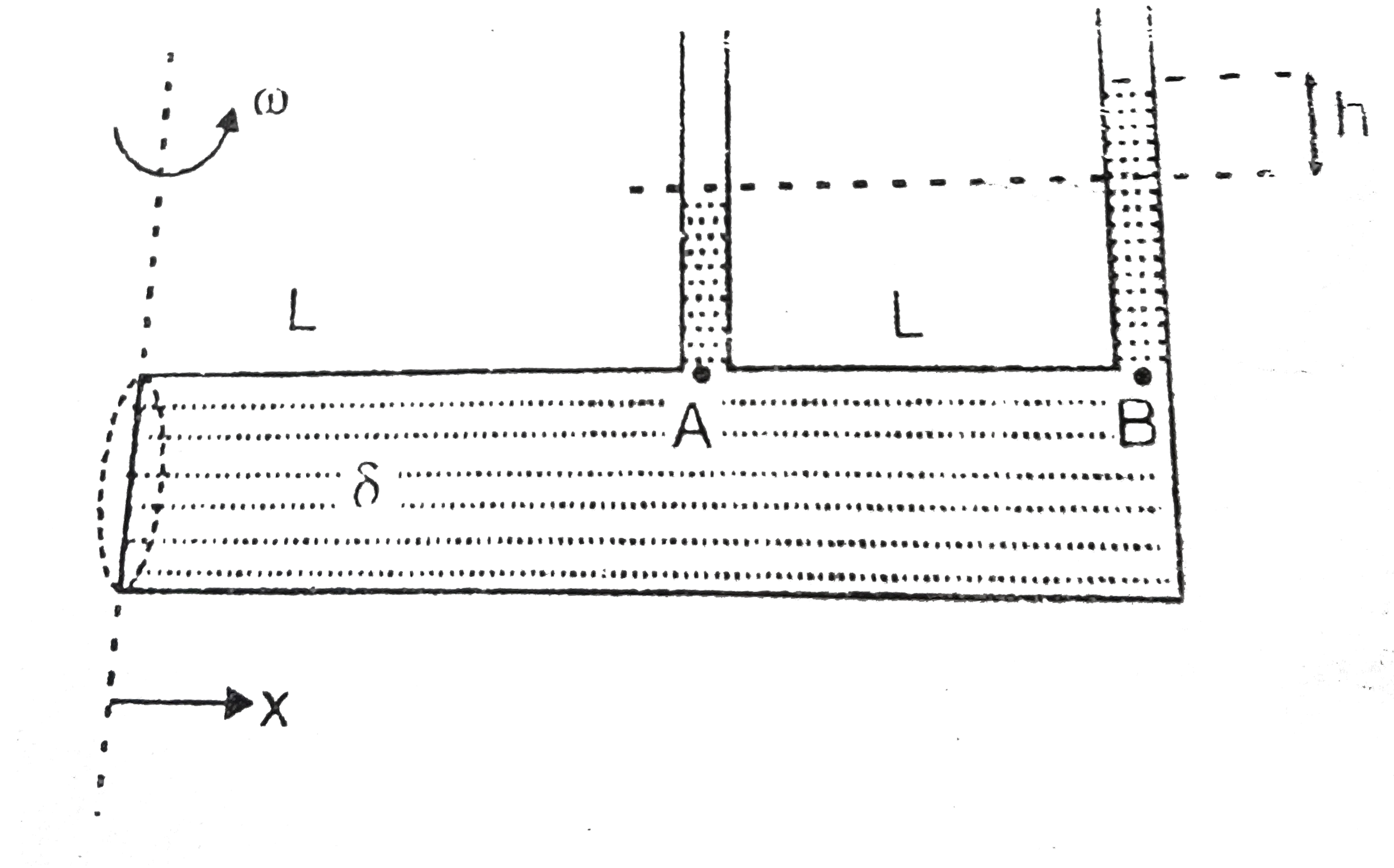
The difference in the heights (h) of the liquid column in the two vertical thin tubes is :
View SolutionA vertical U-tube has one of the its arms bent at θ from the vertical and then filled with a liquid of density ρ up to a height h in the vertical arm. Calculate the period of oscillations of the liquid when disturbed a little and released.
View SolutionLength of a horizontal arm of U-tube is L and ends of both the vertical arms are open to atompsheric pressure P_(0) , A liquid of density rho is poured in the tube such that liquid just fills the horizontal part of the tube as shown in figure . Now one end of the opened ends is sealed and the tube is then rotated about a vertical axis passing through the other vertical arm with angular speed omega_(0) . if length of each vertical arm is a and in the sealed end liquid rises to a height y, find pressure in the sealed tube during rotation.
View SolutionLength of the horizontal arm of a uniform cross - section U - tube is l = 5 cm and both ends of the vertical arms are open to the surrounding pressure of 7700 N m−2. A liquid of density ρ=103 kg m−3 is poured into the tube such that the liquid just fills the horizontal part of the tube. Now, one of the open ends is sealed and the tube. Now, one of the open ends is sealed and the tube is then rotaed about a vertical axis passing through the other veritcal arm with angular velocity ω due to which the liquid rises up to half the length of the vertical arm. If length of each vertical arm is a = 6 cm. What is the value of ω(in rad s−1)?
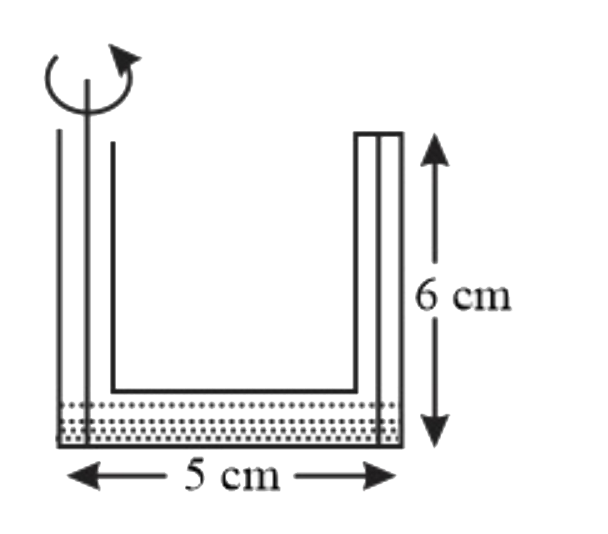
View SolutionA liquid of density ρ is filled in a U-tube is accelerated with an acceleration a so that the height of liquid in its two vertical arms are h1andh2 as shown in the figure. If l is the length of horizontal arm of the tube, the acceleration a is
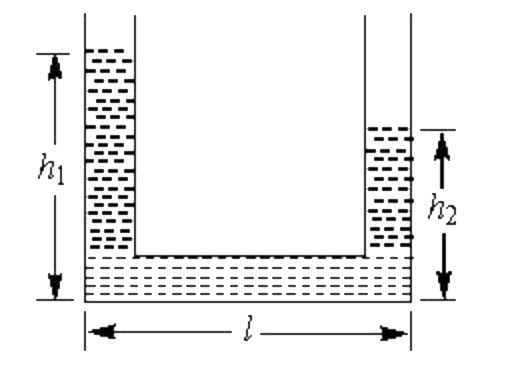
View SolutionA U-tube containing a liquid is accelerated horizontally with a constant acceleration a0. If the separation between the vertical limbs is l find the difference in the heights of the liquid in the two arms.
View Solutionl The equilateral triangular closed tube of arm length is filled with three liquids of the same volume that are not mixed and are vertically arranged with its lower arm horizontally. Fig. x. The value of in is known if the density of liquids is in the parallel range (AP).
View SolutionA U tube is rotated about one of it's limbs with an angular velocity omega . Find the difference in height H of the liquid (density rho ) level, where diameter of the tube dlt lt L .
View Solution
